

| Part of a series on |
| Terrorism |
|---|
A suicide weapon is a weapon designed to be used in a suicide attack, typically based on explosives.


| Part of a series on |
| Terrorism |
|---|
A suicide weapon is a weapon designed to be used in a suicide attack, typically based on explosives.
Suicide weapons have been used both in conventional warfare, as well as in terrorism.

In the Second Sino-Japanese War, Chinese used suicide bombing against the Japanese with explosive vests. A Chinese soldier detonated a grenade vest and killed 20 Japanese at Sihang Warehouse. Chinese troops strapped explosives like grenade packs or dynamite to their bodies and threw themselves under Japanese tanks to blow them up. [1] This tactic was used during the Battle of Shanghai, where a Chinese suicide bomber stopped a Japanese tank column by exploding himself beneath the lead tank, [2] and at the Battle of Taierzhuang where dynamite and grenades were strapped on by Chinese troops who rushed at Japanese tanks and blew themselves up. [3] [4] [5] During one incident at Taierzhuang, Chinese suicide bombers obliterated four Japanese tanks with grenade bundles. [6] [7]
The Pacific War of World War II bore witness to the Japanese kamikaze suicide attack pilots ("kamikaze" was not a term used by the Japanese themselves). Late in the war, as the tide turned against Japan, kamikaze pilots were deployed to attempt to crash their aircraft into American and allied ships in the Pacific. The Japanese even developed specialized aircraft for the tactic, such as the Yokosuka Ohka flying bomb. [8] A successful kamikaze attack would both kill the plane's pilot and damage the target ship, possibly even sinking it. Related tactics included the kaiten suicide minisub, a human torpedo which a single Japanese pilot would steer into an Allied ship. [9]
North Korean tanks were attacked by South Koreans with suicide tactics during the Korean War. [10] [11] American tanks at Seoul were also attacked by North Korean suicide squads, [12] who carried satchel charges on their bodies. [13] A North Korean soldier named Li Su-Bok, who destroyed an American tank during one such attack, is hailed as a hero in North Korea. [14]
Certain aircraft built or projected for the Luftwaffe during the time of the Allied bombing before the surrender of Nazi Germany in World War II, such as the Bachem Ba 349, Fliegende Panzerfaust , Sombold So 344, Zeppelin Rammer or the Blohm & Voss BV 40 are sometimes listed as suicide weapons. However, they were not intended as such, even though the chances of survival would have been very limited for the pilots of such dangerous artifacts. In those years Nazi authorities considered the use of selbstopfer (suicide) planes such as the Messerschmitt Me 328 and the Fieseler 103. [15]
Political groups using suicide weapons in the post-Cold War era include mainly outfits affiliated to Islamic terrorism, [16] among which even children have been used in order to escape detection when carrying out suicide attacks. [17] However, non-Islamic groups, such as the Liberation Tigers of Tamil Eelam, also have been prone to use suicide weapons. Today, the most common suicide weapons used to carry out terrorist attacks are car bombs or truck bombs, as well as antipersonnel bombs carried by a single person. Suicide bombers strap explosives, often covered with nails, screws, or other items intended to act as fragments, to their bodies or otherwise carry them into populated areas and detonate them. The Tamil Tigers of Sri Lanka are known for having made high-profile use of this method in the assassination of Rajiv Gandhi. Similar methods have been also used by Palestinian terrorist groups in the Israeli–Palestinian conflict, among others.
Kamikaze attacks were mimicked in the September 11 attacks in 2001, in which a group of mostly Saudi terrorists destroyed the World Trade Center and part of the Pentagon by flying hijacked jet airliners into them. It was the first and only time in history that hijacked jet airliners filled with fuel were used as cruise missiles against targets of such magnitude. [18] [19]
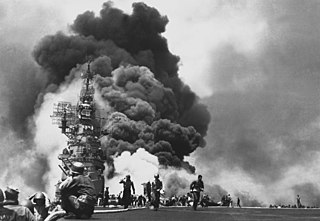
Kamikaze, officially Shinpū Tokubetsu Kōgekitai, were a part of the Japanese Special Attack Units of military aviators who flew suicide attacks for the Empire of Japan against Allied naval vessels in the closing stages of the Pacific campaign of World War II, intending to destroy warships more effectively than with conventional air attacks. About 3,800 kamikaze pilots died during the war, and more than 7,000 naval personnel were killed by kamikaze attacks.

A bomb is an explosive weapon that uses the exothermic reaction of an explosive material to provide an extremely sudden and violent release of energy. Detonations inflict damage principally through ground- and atmosphere-transmitted mechanical stress, the impact and penetration of pressure-driven projectiles, pressure damage, and explosion-generated effects. Bombs have been utilized since the 11th century starting in East Asia.

A car bomb, bus bomb, van bomb, lorry bomb, or truck bomb, also known as a vehicle-borne improvised explosive device (VBIED), is an improvised explosive device designed to be detonated in an automobile or other vehicles.

The Yokosuka MXY-7 Ohka was a purpose-built, rocket-powered human-guided kamikaze attack-aircraft deployed by Japan against Allied ships in the Pacific Ocean theater towards the end of World War II. Although extremely fast, the Ohka had a very short range, so it had to be carried into action as a parasite aircraft by a much larger bomber, which was itself vulnerable to carrier-borne fighters. In action during the Battle of Okinawa in 1945, Ohkas succeeded in sinking or damaging some escort-vessels and transport ships, but never sank any major warships. The Japanese developed improved versions in an attempt to overcome the aircraft's shortcomings, but they came too late for deployment.
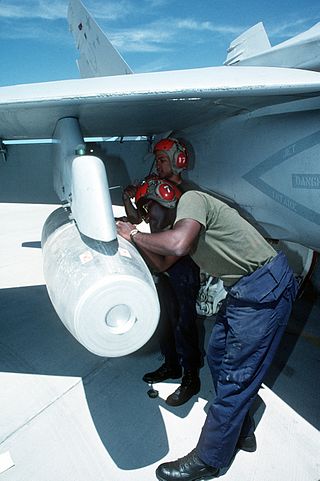
Incendiary weapons, incendiary devices, incendiary munitions, or incendiary bombs are weapons designed to start fires. They may destroy structures or sensitive equipment using fire, and sometimes operate as anti-personnel weaponry. Incendiaries utilize materials such as napalm, thermite, magnesium powder, chlorine trifluoride, or white phosphorus. Though colloquially often called "bombs", they are not explosives but in fact operate to slow the process of chemical reactions and use ignition rather than detonation to start or maintain the reaction. Napalm, for example, is petroleum especially thickened with certain chemicals into a gel to slow, but not stop, combustion, releasing energy over a longer time than an explosive device. In the case of napalm, the gel adheres to surfaces and resists suppression.
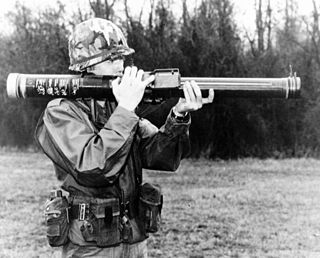
Anti-tank warfare originated during World War I from the desire to develop technology and tactics to destroy tanks. After the Allies deployed the first tanks in 1916, the German Empire introduced the first anti-tank weapons. The first developed anti-tank weapon was a scaled-up bolt-action rifle, the Mauser 1918 T-Gewehr, that fired a 13.2 mm cartridge with a solid bullet that could penetrate the thin armor used by tanks at that time and destroy the engine or ricochet inside, killing occupants. Because tanks represent an enemy's strong force projection on land, military strategists have incorporated anti-tank warfare into the doctrine of nearly every combat service since. The most predominant anti-tank weapons at the start of World War II in 1939 included the tank-mounted gun, anti-tank guns and anti-tank grenades used by the infantry, and ground-attack aircraft.

The Ishikawajima Tsu-11 was a motorjet produced in small numbers in Japan in the closing stages of World War II. It was principally designed to propel the Japanese Yokosuka MXY7 Ohka flying bomb, a kamikaze weapon.

A flying bomb is a manned or unmanned aerial vehicle or aircraft carrying a large explosive warhead, a precursor to contemporary cruise missiles. In contrast to a bomber aircraft, which is intended to release bombs and then return to its base for re-use, a flying bomb crashes into its target and is therefore destroyed in its attack.

An explosive belt is an improvised explosive device, a belt or a vest packed with explosives and armed with a detonator, worn by suicide bombers. Explosive belts are usually packed with ball bearings, nails, screws, bolts, and other objects that serve as shrapnel to maximize the number of casualties in the explosion.

The Yokosuka D4Y Suisei is a two-seat carrier-based dive bomber developed by the Yokosuka Naval Air Technical Arsenal and operated by the Imperial Japanese Navy from 1942 to 1945 during World War II. Development of the aircraft began in 1938. The first D4Y1 was complete in November 1940 and made its maiden flight at Yokosuka the following month.
The Mitsubishi G4M is a twin-engine, land-based medium bomber formerly manufactured by the Mitsubishi Aircraft Company, a part of Mitsubishi Heavy Industries, and operated by the Imperial Japanese Navy from 1940 to 1945. Its official designation is Mitsubishi Navy Type 1 attack bomber and was commonly referred to by Japanese Navy pilots as Hamaki due to the cylindrical shape of its fuselage and its tendency to ignite after a hit. The Allied reporting name was "Betty".

The Nakajima Ki-115 Tsurugi is a one-man kamikaze aircraft that was developed by the Imperial Japanese Army Air Force during the closing stages of World War II in 1945. The Imperial Japanese Navy called this aircraft Tōka.

Kaiten were crewed torpedoes and suicide craft, used by the Imperial Japanese Navy in the final stages of World War II.
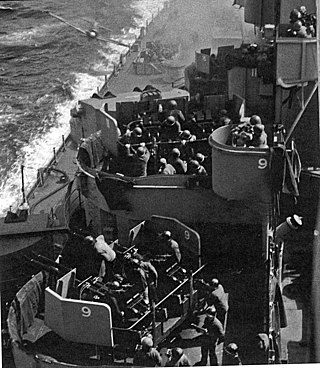
During World War II, Japanese Special Attack Units, also called shimbu-tai, were specialized units of the Imperial Japanese Navy and Imperial Japanese Army normally used for suicide missions. They included kamikaze aircraft, fukuryu frogmen, and several types of suicide boats and submarines.
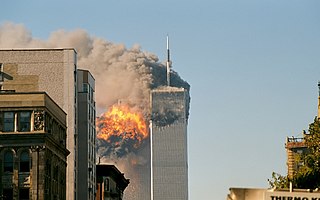
A suicide attack is a deliberate attack in which the perpetrators knowingly sacrifice their own lives as part of the attack. These attacks are often associated with terrorism or military conflicts and are considered a form of murder–suicide. Suicide attacks involving explosives are commonly referred to as suicide bombings. In the context of terrorism, they are also commonly referred to as suicide terrorism. While generally not inherently regulated under international law, suicide attacks in their execution often violate international laws of war, such as prohibitions against perfidy and targeting civilians.

The Battle of Taierzhuang took place during the Second Sino-Japanese War in 1938. It was fought between the armies of the Republic of China and the Empire of Japan. The battle was the war's first major Chinese victory. It humiliated the Japanese military and its reputation as an invincible force; for the Chinese, it represented a tremendous morale boost.
Animal-borne bomb attacks are the use of animals as delivery systems for explosives. The explosives are strapped to a pack animal such as a horse, mule or donkey. The pack animal may be set off in a crowd.
An anti-tank grenade is a specialized hand-thrown grenade used to defeat armored targets. Although their inherently short range limits the usefulness of grenades, troops can lie in ambush or maneuver under cover to exploit the limited outward visibility of the crew in a target vehicle. Hand launched anti-tank grenades became redundant with the introduction of standoff rocket propelled grenades and man-portable anti-tank systems.
{{cite book}}: |website= ignored (help)